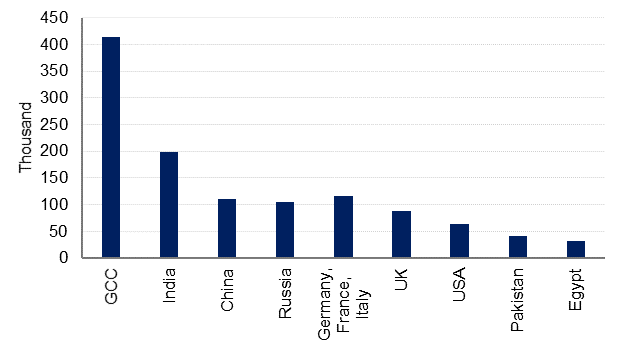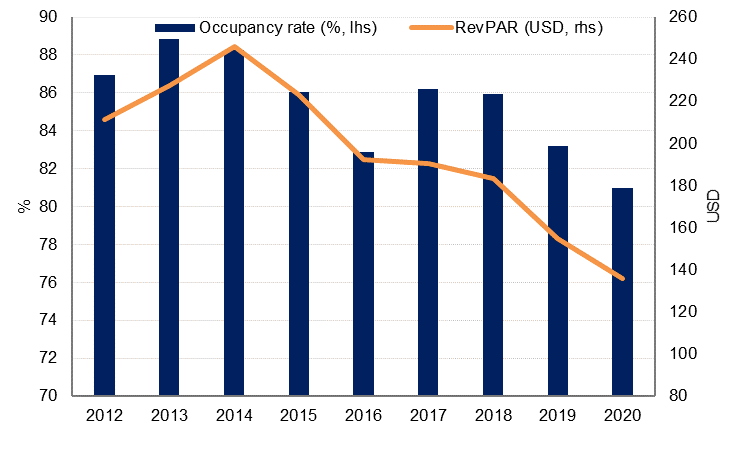
Saudi Arabia overtook India as the main source of international visitors to Dubai in January, according to data from the Department for Tourism and Commerce Marketing (DTCM). There were 266k visitors from KSA in January, up 66% y/y. The number of visitors from India declined -4% y/y to 198k. The UK has fallen to 6th place in terms of visitors to Dubai from 3rd spot, replaced by China as 11% more Chinese nationals came to Dubai compared with January 2019. The number of visitors from Russia and Oman also exceeded those from the UK.
 Source: DTCM, Emirates NBD Research
Source: DTCM, Emirates NBD Research
The total number of visitors to Dubai rose 11% y/y in January 2020, indicating a promising start for the tourism and hospitality industry this year, before the impact of the coronavirus started to be felt in earnest.
Hotel occupancy data (from STR Global) also showed a rise in average hotel occupancy in Dubai in January to 84.4%, up from 81.6% in January 2019, despite a 9% increase in the number of hotel rooms in the emirate. However, revenue per available room (RevPAR) was down -3% y/y.
Hotel data for February already show a marked deterioration however, with average hotel occupancy falling to 77.1%, compared with 84.9% in February 2019. Moreover, RevPAR declined -23% y/y in February.
 Source: STR Global, Emirates NBD Research
Source: STR Global, Emirates NBD Research
With the restrictions on travel really only taking effect in March, to the extent that borders were effectively closed in the last week of March, the January data is almost irrelevant now. The tourism and hospitality sector is likely to be one of the most severely affected by the impact of the coronavirus on global travel and other economic activity. The postponement of Expo 2020 (still to be formally announced by the BIE but supported by the Expo 2020 steering committee) suggests that the tourism and hospitality sector in Dubai may take some time to recover even after travel restrictions start being eased.